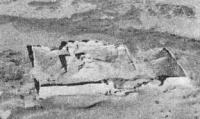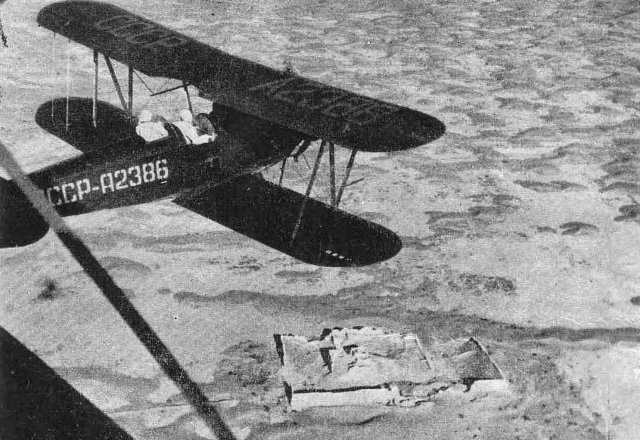Вы здесь
Fortress Adamli kala.

Travels in Karakalpakstan.
“It was a castle of the VIth - VIIIth centuries. n. e. Adamli-kala ("Fortress with a man"). The illusion was created by a bizarre prong of the destroyed wall, which, however, did not resemble a human at all up close. On the way, we were caught by a fierce sandstorm - the entire surrounding space was filled with a humming impenetrable whirlwind of hot sand, the "Fortress with a man" disappeared, the silhouette of a neighboring camel was barely visible"
Tolstov S.P. "In the footsteps of the ancient Khorezm civilization." 1948.
Religious tourism in Karakalpakstan.
The Adamli Kala fortress is located in the southwestern part of the Kyzylkum desert, 1.6 kilometers north of the village of Bezirgen, 13.5 kilometers east of the village of Bustan, 23.4 kilometers northeast of the city of Turkul in the Turtkul region in southeastern part of the Republic of Karakalpakstan.
“It was a castle of the VIth - VIIIth centuries. n. e. Adamli-kala ("Fortress with a man"). The illusion was created by a bizarre prong of the destroyed wall, which, however, did not look like a human at all up close. On the way, we were caught by a fierce sandstorm - the entire surrounding space was filled with a humming impenetrable whirlwind of hot sand, the "Fortress with a Man" disappeared, the silhouette of a neighboring camel was barely visible.
With difficulty we got to the shelter under the walls of Adamli-kala. Since the water supply was exhausted, we decided not to interrupt the work and, taking advantage of the minutes of relative calm, we measured and photographed the fortress.
It is difficult to forget the figure of E.A. Polyakov, when he, in order not to be knocked down by the wind, from behind the wall, like some villain from around the corner, aimed his apparatus at the central tower of the fortress.
Probably, Sansyzbay Uryumov and I had no less original appearance, when, overcoming the wind and sand, holding the tape of the roulette that was torn from our hands, we climbed this tower, risking flying into the sky, like one of the characters in Yuri Olesha's fairy tale.
The lack of water (here, however, our inexperience also affected; later we strictly adhered to the rules of work in the desert: "you go for a day - take water for a week") did not give us the opportunity to wait until the end of the storm.
Only when we reached Koi-Krylgan again did the sun come out, and halfway to Teshik-kala we were met by a "rescue expedition" on a camel with two barrels of water."
Tolstov S.P. “In the footsteps of the ancient Khorezm civilization. Part 1". 1948.
Legend about the fortress city of Adamli kala.
Adamli kala stood on a dais and was surrounded by a wide moat filled with water. A wide bridge of thick logs and planks was built across the moat, supported by thick ropes. A caravan of camels with goods from distant countries could pass over this bridge, a heavily laden cart with wheels taller than human height could pass, a detachment of horsemen with war booty could ride after a successful raid on some neighboring fortress state, and shepherds-shepherds could drive away a large flock of sheep if they were threatened by a raid of nomads who often appeared in these places in order to profit.
The gates of the city let everyone through, but only after sunrise. At sunset, the strong gates were locked with heavy forged bolts, and vigilant guards were on duty on the formidable tower with loopholes. Anyone who tried to enter the fortress city by force at an inopportune time would be greeted with a cloud of arrows, a hail of stones, and even doused with boiling oil.
The Adamli-kala fortress was impregnable, and its inhabitants were brave and courageous and could withstand a long and exhausting siege. In the cellars and barns of the fortress there were always enough supplies - both grain and sheep's cheese, oils of various plants, steppe honey and dried fruits and even fish for future use.
There were legends about the wealth of Adamli-kala, and it seemed that nothing ever threatened her and its inhabitants. But any, even the most lasting happiness can collapse under the blows of fate, if the gods so wish, in whose honor daily prayers were offered up in the fortress, a sacrificial fire was kindled on the altar of a beautiful temple.
How and when the inhabitants of Adamli-kala angered the omnipotent gods, no one will know, but a disaster struck: a terrible drought came to earth. First, a hot wind blew over the surrounding fields from the desert and brought a sandstorm.
Farmers in the fall did not collect a single grain from their fields. In the orchards that bloomed so magnificently in spring, no sweet berry or juicy fruit ripened. However, the inhabitants of Adamli-kala survived this attack quite easily: from the past harvests there was enough grain in stock, and the herds of horses, herds of cows and flocks of sheep were still numerous.
The next year, disaster struck again. Spring and summer showers were so strong and prolonged that everything around was covered with water, and some fertile valleys, when the water subsided, turned into swamps.
The irrigation network - canals and irrigation ditches - turned out to be heavily clogged. Crops in many fields were washed away, as if a cow had licked them with her tongue. But this time, the inhabitants of Adamli-kala survived a difficult hard times, although with great difficulty they made it to spring and managed to sow in the hope that this year they could gather a bountiful harvest and avoid starvation.
However, not a drop of rain fell on the ground in spring or summer, and all the rivers and streams were completely dry. The soil in the fields was so dry that it all cracked, and in some places turned to stone. And this year not a single ear has sprung up, not only in the fields of Adamli kala, but also far around.
People began to die of hunger, and only one greedy buy, the owner of the largest land plots and herds, who still had a lot of grain in the bins, profited from human misery. He sold grain so dearly, for such a price, that he soon became richer than the padishah himself.
But everything was not enough for him. He was paid for a sack of grain as much as the merchants had previously asked for a whole caravan of camels loaded with selected grain. For a handful of grain, he demanded a handful of gold.
Those who had something else paid, and those who had nothing, they died. Having sold out all the good-quality grain without a trace, the greedy buy found in himself a sack of old, musty, heavily clogged grain. In order to sell it, he decided to dry and winnow it.
Buy with a sack climbed onto the flat roof of the corner tower and began to scatter grain there for drying and winnowing, rejoicing that having sold these remnants too, he would become even richer. At this time, he did not think about the torment and suffering of people, about the fact that his fellow citizens were dying of hunger, who built and defended this fortress and himself, plowed fields and grew gardens on his lands, dug canals and irrigated the land, did not think that his wealth was acquired by their labor.
No, he saw in front of him in this clogged and musty grain another heap of gold and jewelry. He did not entrust anyone to winnow this grain, fearing that someone who was hungry would not stand it and would take at least one grain.
At this time, a boy climbed up to him on the roof of the tower and asked:
- Bai-ata, let me help us, and you will give me a few grains for this. Please, otherwise I will starve to death, as my parents and brothers and sisters died.
- “Get out of here, beggar,” bai chased him away and even kicked him, and at that moment the clear sky, on which there had not been a single cloud for so many months, suddenly darkened.
God, who looked down at such cruelty from heaven, got angry and decided to punish the greedy bai. Lightning flashed, thunder struck, a strong wind blew and hid everything in a cloud of sand and dust. Lightning flashed again and everything was quiet.
In the clear sky, as before, the sun was shining, the air was still, and even the birds, exhausted by the heat and hunger, did not take off from the branches of the trees, blackened by drought. The boy, who had not yet managed to descend from the tower, saw that Bai was standing still and petrified.
He could not believe his eyes, came closer, touched the Bai's hand, his dressing gown - everything was cold and petrified. Both a hat and a bilbak - a belt scarf, and leather ichigi. The boy touched the heap of grain, which was dried and winnowed by the buy, but it remained real, not petrified.
Hastily the boy put several grains into his mouth - the grain did not even smell musty and damp now, it was as if it had just been threshed from a new crop. Thanks to this grain, the boy survived and then told people, pointing to the petrified bai, how God punished the rich man for greed and cruelty.
Centuries have passed, but to this day, among the sandy desert, abandoned by people, stands the dilapidated, sand-covered fortress Adamli-kala, a fortress with a stone silhouette of a man on a tower, as a reminder to everyone that one cannot get rich on someone else's mountain, one cannot be greedy and merciless
Geographic coordinates of the fortress Adamli kala: N41 ° 44'27.40 "E61 ° 07'20.20"

Authority:
http://xorezm.com/index.php?mod=art&act=show&id=21
Photos by
Tolstov S.P. "In the footsteps of the ancient Khorezm civilization." 1948.







